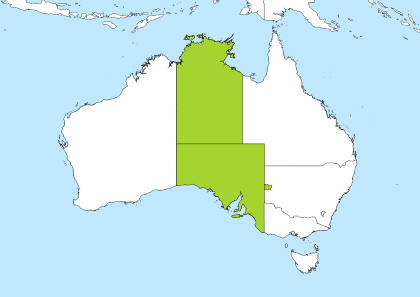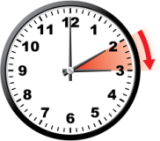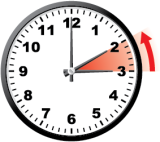ChST to ACST Converter
ACST is NOT in use by many locations
ACDT (Australian Central Daylight Time) is used instead. Switch to ACDT time zone or select one of the cities Adelaide, Darwin, Adelaide Hills) for automatic timezone change.Time Difference
Chamorro Standard Time is 0 hours and 30 minutes ahead of Australian Central Standard Time
11:30 pm23:30 in ChST is 11:00 pm23:00 in ACST
ChST to ACST call time
Best time for a conference call or a meeting is between 8:30am-6pm in ChST which corresponds to 8am-5:30pm in ACST
11:30 pm23:30 Chamorro Standard Time (ChST). Offset UTC +10:00 hours
11:00 pm23:00 Australian Central Standard Time (ACST). Offset UTC +9:30 hours
11:30 pm23:30 ChST / 11:00 pm23:00 ACST
| ChST | ACST |
|---|---|
| 12am (midnight) | 11:30 pm |
| 1am | 12:30 am |
| 2am | 1:30 am |
| 3am | 2:30 am |
| 4am | 3:30 am |
| 5am | 4:30 am |
| 6am | 5:30 am |
| 7am | 6:30 am |
| 8am | 7:30 am |
| 9am | 8:30 am |
| 10am | 9:30 am |
| 11am | 10:30 am |
| 12pm (noon) | 11:30 am |
| 1pm | 12:30 pm |
| 2pm | 1:30 pm |
| 3pm | 2:30 pm |
| 4pm | 3:30 pm |
| 5pm | 4:30 pm |
| 6pm | 5:30 pm |
| 7pm | 6:30 pm |
| 8pm | 7:30 pm |
| 9pm | 8:30 pm |
| 10pm | 9:30 pm |
| 11pm | 10:30 pm |
| 0:00 | 23:30 |
| 1:00 | 0:30 |
| 2:00 | 1:30 |
| 3:00 | 2:30 |
| 4:00 | 3:30 |
| 5:00 | 4:30 |
| 6:00 | 5:30 |
| 7:00 | 6:30 |
| 8:00 | 7:30 |
| 9:00 | 8:30 |
| 10:00 | 9:30 |
| 11:00 | 10:30 |
| 12:00 | 11:30 |
| 13:00 | 12:30 |
| 14:00 | 13:30 |
| 15:00 | 14:30 |
| 16:00 | 15:30 |
| 17:00 | 16:30 |
| 18:00 | 17:30 |
| 19:00 | 18:30 |
| 20:00 | 19:30 |
| 21:00 | 20:30 |
| 22:00 | 21:30 |
| 23:00 | 22:30 |
Chamorro Standard Time
Offset: ChST is 10 hours ahead Greenwich Mean Time (GMT) and is used in Pacific
Countries: It is used in following countries: Guam, Northern Mariana Islands
Principal Cities: The largest city in the ChST timezone is Saipan from Northern Mariana Islands with population about 48,220 people. Other major cities in the area are Dededo Village, Yigo Village, Tamuning Tumon Harmon Village, Mangilao Village
Daylight Saving: Chamorro Standard Time (ChST) is not adjusted for daylight saving therefore ChST remains the same through out the year. This means, unlike some time zones where the clock is set forward by one hour every summer and backward by one hour during winter to adjust for daylight saving, Chamorro Standard Time remains the same
ChST representations, usage and related time zones
- +10 - basic short
- +1000 - basic
- +10:00 - extended
- +1000 - sign character (+) followed by a four digit time providing hours (10) and minutes (00) of the offset. Indicates ten hour and zero minutes time differences to the east of the zero meridian.
- Kilo - Military abbreviation for ChST
- K - short form of 'Kilo'
- Pacific/Guam
- Pacific/Saipan
- AEST - Australian Eastern Standard Time
- CHUT - Chuuk Time
- ChST - Chamorro Standard Time
- K - Kilo Time Zone
- KDT - Korea Daylight Time
- PGT - Papua New Guinea Time
- VLAT - Vladivostok Time
- YAKST - Yakutsk Summer Time
- YAPT - Yap Time
Australian Central Standard Time
Offset: ACST is 9 hours and 30 minutes ahead Greenwich Mean Time (GMT) and is used in Australia
Countries: It is used in following countries: Australia
Principal Cities: The largest city in the ACST timezone is Adelaide from Australia with population about 1.225 million people. Other major cities in the area are Darwin, Adelaide Hills, Alice Springs, Palmerston

Daylight Saving: This is a standard time zone, however during summer some places switch clocks for one hour forward when daylight saving comes into effect and observe Australian Central Daylight Time (ACDT).
 End: Australian Central Standard Time (ACST) has ended on Sunday, October 6, 2024 at 2:00 am local time and clocks were set one hour forward to Sunday, October 6, 2024, 3:00 am local daylight time instead. Standard time ends annually the on first Sunday of October.
End: Australian Central Standard Time (ACST) has ended on Sunday, October 6, 2024 at 2:00 am local time and clocks were set one hour forward to Sunday, October 6, 2024, 3:00 am local daylight time instead. Standard time ends annually the on first Sunday of October.
 Start: Australian Central Standard Time (ACST) starts on Sunday, April 6, 2025 at 3:00 am local time and clocks are set one hour back to Sunday, April 6, 2025, 2:00 am. Standard time starts annually the on first Sunday of April.
Start: Australian Central Standard Time (ACST) starts on Sunday, April 6, 2025 at 3:00 am local time and clocks are set one hour back to Sunday, April 6, 2025, 2:00 am. Standard time starts annually the on first Sunday of April.
ACST representations, usage and related time zones
- +0930 - basic
- +09:30 - extended
- +0930 - sign character (+) followed by a four digit time providing hours (09) and minutes (30) of the offset. Indicates nine hour and thirty minutes time differences to the east of the zero meridian.
- Australia/Adelaide
- Australia/Broken_Hill
- Australia/Darwin
- Australia/North
- Australia/South
- Australia/Yancowinna
